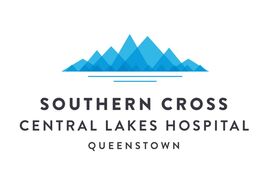Central Lakes, Dunedin - South Otago, Southland, Waitaki > Private Hospitals & Specialists >
Southern Cross Central Lakes Hospital - Plastic Surgery
Private Surgical Service, Plastic Surgery
Description
Located in Queenstown, Southern Cross Central Lakes Hospital provides patients in the Central Lakes region with greater access to quality elective surgery closer to home.
Southern Cross Central Lakes Hospital, is a joint venture partnership between Central Lakes Trust and Southern Cross Healthcare, whose shared purpose is to support the health and wellbeing of communities in the region.
The facility began operating in early 2022, and includes 3 operating theatres and 13 inpatient beds, each with its own ensuite facilities.
Hospital services are available to both privately and publicly funded patients to support broader access to healthcare in the region. Accident and emergency services are not offered, however the hospital will be providing planned surgery for patients who are eligible for access through ACC.
Consultants
-

Dr Rebecca Ayers
Plastic Surgeon
-

Mr Murray Beagley
Plastic Surgeon
-

Dr Anne Collins
Plastic Surgeon
-

Dr Agneta Fullarton
Plastic Surgeon
Procedures / Treatments
Raised naevi may be removed surgically by cutting down to the level of the skin but naevi that may have become cancerous will be cut out entirely and stitches will be required.
Raised naevi may be removed surgically by cutting down to the level of the skin but naevi that may have become cancerous will be cut out entirely and stitches will be required.
Raised naevi may be removed surgically by cutting down to the level of the skin but naevi that may have become cancerous will be cut out entirely and stitches will be required.
Surgery to increase breast size involves inserting silicone sacks (implants) filled with silicone gel or salt water (saline) under the chest muscle and skin. The procedure involves making a cut (incision) in the armpit, under the breast or around the areola (the dark area around the nipple) from where the implant is inserted.
Surgery to increase breast size involves inserting silicone sacks (implants) filled with silicone gel or salt water (saline) under the chest muscle and skin. The procedure involves making a cut (incision) in the armpit, under the breast or around the areola (the dark area around the nipple) from where the implant is inserted.
Surgery to increase breast size involves inserting silicone sacks (implants) filled with silicone gel or salt water (saline) under the chest muscle and skin. The procedure involves making a cut (incision) in the armpit, under the breast or around the areola (the dark area around the nipple) from where the implant is inserted.
This is an operation that can lift and reshape sagging breasts. The procedure usually involves removing skin from an area below the nipple and reshaping the breast.
This is an operation that can lift and reshape sagging breasts. The procedure usually involves removing skin from an area below the nipple and reshaping the breast.
This is an operation that can lift and reshape sagging breasts. The procedure usually involves removing skin from an area below the nipple and reshaping the breast.
A silicone sack filled with either silicone gel or saline (salt water) is inserted underneath the chest muscle and skin. Before being inserted, the skin will sometimes need to be stretched to the required breast size. This is done by placing an empty bag where the implant will finally go, and gradually filling it with saline over weeks or months. The bag is then replaced by the implant in another operation.
A silicone sack filled with either silicone gel or saline (salt water) is inserted underneath the chest muscle and skin. Before being inserted, the skin will sometimes need to be stretched to the required breast size. This is done by placing an empty bag where the implant will finally go, and gradually filling it with saline over weeks or months. The bag is then replaced by the implant in another operation.
Service types: Breast reconstruction.
A silicone sack filled with either silicone gel or saline (salt water) is inserted underneath the chest muscle and skin. Before being inserted, the skin will sometimes need to be stretched to the required breast size. This is done by placing an empty bag where the implant will finally go, and gradually filling it with saline over weeks or months. The bag is then replaced by the implant in another operation.
Surgery to reduce breast size involves making a cut (incision) around the areola (the dark area around the nipple) straight downwards and along the crease beneath the breast. Glandular tissue, fat and skin are removed and the breast reshaped.
Surgery to reduce breast size involves making a cut (incision) around the areola (the dark area around the nipple) straight downwards and along the crease beneath the breast. Glandular tissue, fat and skin are removed and the breast reshaped.
Surgery to reduce breast size involves making a cut (incision) around the areola (the dark area around the nipple) straight downwards and along the crease beneath the breast. Glandular tissue, fat and skin are removed and the breast reshaped.
Surgery to relieve carpal tunnel syndrome involves making a cut (incision) from the middle of the palm of your hand to your wrist. Tissue that is pressing on the nerve is then cut to release the pressure.
Surgery to relieve carpal tunnel syndrome involves making a cut (incision) from the middle of the palm of your hand to your wrist. Tissue that is pressing on the nerve is then cut to release the pressure.
Surgery to relieve carpal tunnel syndrome involves making a cut (incision) from the middle of the palm of your hand to your wrist. Tissue that is pressing on the nerve is then cut to release the pressure.
Surgery to repair a cleft lip involves making a cut (incision) on both sides of the gap in the lip (cleft). The surgeon then turns the dark-coloured edge of the cleft under and pulls the muscle and skin of the lip together to close the gap. Surgery to repair a cleft palate involves making cuts in the roof of the mouth on each side of the gap. Tissue and muscles are moved towards the centre of the roof of the mouth and joined together, closing the gap.
Surgery to repair a cleft lip involves making a cut (incision) on both sides of the gap in the lip (cleft). The surgeon then turns the dark-coloured edge of the cleft under and pulls the muscle and skin of the lip together to close the gap. Surgery to repair a cleft palate involves making cuts in the roof of the mouth on each side of the gap. Tissue and muscles are moved towards the centre of the roof of the mouth and joined together, closing the gap.
Surgery to repair a cleft lip involves making a cut (incision) on both sides of the gap in the lip (cleft). The surgeon then turns the dark-coloured edge of the cleft under and pulls the muscle and skin of the lip together to close the gap.
Surgery to repair a cleft palate involves making cuts in the roof of the mouth on each side of the gap. Tissue and muscles are moved towards the centre of the roof of the mouth and joined together, closing the gap.
Cuts (incisions) are made behind the ears through which the cartilage in the ear can be reshaped or removed.
Cuts (incisions) are made behind the ears through which the cartilage in the ear can be reshaped or removed.
Cuts (incisions) are made behind the ears through which the cartilage in the ear can be reshaped or removed.
This procedure typically involves making a small cut (incision) in the fold of the eyelid (for the upper lid) or just below the eyelashes (for the lower lid) and removing any excess skin and/or fat.
This procedure typically involves making a small cut (incision) in the fold of the eyelid (for the upper lid) or just below the eyelashes (for the lower lid) and removing any excess skin and/or fat.
This procedure typically involves making a small cut (incision) in the fold of the eyelid (for the upper lid) or just below the eyelashes (for the lower lid) and removing any excess skin and/or fat.
This usually involves cutting out the old scar, closing the wound with stitches and, in some cases, moving the scar so that it is hidden by natural features of the body. If the scar to be revised is particularly large, it may be necessary to have a skin graft. This involves transferring skin from another, healthy part of the body (donor site) to the injured site (recipient site).
This usually involves cutting out the old scar, closing the wound with stitches and, in some cases, moving the scar so that it is hidden by natural features of the body. If the scar to be revised is particularly large, it may be necessary to have a skin graft. This involves transferring skin from another, healthy part of the body (donor site) to the injured site (recipient site).
This usually involves cutting out the old scar, closing the wound with stitches and, in some cases, moving the scar so that it is hidden by natural features of the body. If the scar to be revised is particularly large, it may be necessary to have a skin graft. This involves transferring skin from another, healthy part of the body (donor site) to the injured site (recipient site).
Cuts (incisions) are made across the lower stomach and around the tummy button and the muscles underneath are pulled together and stitched. Excess fat is removed. The skin flap is stretched down and the excess skin removed. A new hole is made and the tummy button replaced.
Cuts (incisions) are made across the lower stomach and around the tummy button and the muscles underneath are pulled together and stitched. Excess fat is removed. The skin flap is stretched down and the excess skin removed. A new hole is made and the tummy button replaced.
Cuts (incisions) are made across the lower stomach and around the tummy button and the muscles underneath are pulled together and stitched. Excess fat is removed. The skin flap is stretched down and the excess skin removed. A new hole is made and the tummy button replaced.
The following different types of surgery are available if varicose veins require treatment: Sclerotherapy – a tiny needle is used to inject a chemical solution into the vein that causes the vein to collapse. This approach is recommended for small varicose veins only. Vein stripping – the varicose veins are cut out and the veins that branch off them are tied off. The cuts (incisions) made in the skin are closed with sutures. Phlebectomy – small cuts (incisions) are made in the leg and the varicose veins are pulled out with a tiny hook-like instrument. The cuts are closed with tape rather than sutures and, once healed, are almost invisible.
The following different types of surgery are available if varicose veins require treatment: Sclerotherapy – a tiny needle is used to inject a chemical solution into the vein that causes the vein to collapse. This approach is recommended for small varicose veins only. Vein stripping – the varicose veins are cut out and the veins that branch off them are tied off. The cuts (incisions) made in the skin are closed with sutures. Phlebectomy – small cuts (incisions) are made in the leg and the varicose veins are pulled out with a tiny hook-like instrument. The cuts are closed with tape rather than sutures and, once healed, are almost invisible.
The following different types of surgery are available if varicose veins require treatment:
- Sclerotherapy – a tiny needle is used to inject a chemical solution into the vein that causes the vein to collapse. This approach is recommended for small varicose veins only.
- Vein stripping – the varicose veins are cut out and the veins that branch off them are tied off. The cuts (incisions) made in the skin are closed with sutures.
- Phlebectomy – small cuts (incisions) are made in the leg and the varicose veins are pulled out with a tiny hook-like instrument. The cuts are closed with tape rather than sutures and, once healed, are almost invisible.
Disability Assistance
Wheelchair access
Visiting Hours
Between 8.00am-8.00pm
Parking
Directly outside and behind the hospital.
Contact Details
Southern Cross Central Lakes Hospital
Central Lakes
-
Phone
03 746 7460
Email
Website
7 Twelfth Avenue
Shotover Country
Queenstown
Otago 9304
Street Address
7 Twelfth Avenue
Shotover Country
Queenstown
Otago 9304
Postal Address
PO Box 191
Queenstown 9348
Was this page helpful?
This page was last updated at 10:47AM on March 18, 2024. This information is reviewed and edited by Southern Cross Central Lakes Hospital - Plastic Surgery.

